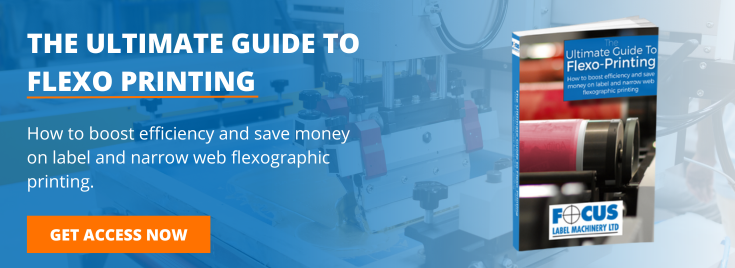 There are several kinds of printing options available for commercial printing businesses. However, flexographic printing offers the most benefits by far. Let’s look at flexo’s benefits and then compare these to other printing types.
There are several kinds of printing options available for commercial printing businesses. However, flexographic printing offers the most benefits by far. Let’s look at flexo’s benefits and then compare these to other printing types.
Why Flexo Is A Superior Choice For Your Printing Needs
Flexo-printing is an extremely versatile and popular method of printing. It allows any flexible material to be printed on, even those which may seem impossible to carry a print, such as cellophane, plastics and metallic films. This ability makes flexo ideal for printing on food packaging, Chemical & Pharmaceutical and product labels. Flexo’s versatility also extends to the ink types which can be used with it. These include UV, solvent and water-based inks. These inks are less costly to purchase than inks for other printing methods, and no specially-prepared, costlier substrates are necessary to ensure that a high quality result is achieved.The efficiency and cost-effectiveness of a flexo-printer cannot be denied. Modern flexo-presses can print at speeds of up to 250m per minute, far faster than their digital and lithographic counterparts. For companies needing medium or large print runs, the speed and efficiency of flexo-printing renders the time taken to fill inkwells, reset drivers and create print plates completely insignificant.
Flexo also allows printing to occur in continuous runs & repeat Jobs, making the printing of items like wallpaper, commercial labels and food packaging incredibly fast and easy to accomplish.
There are three main types of flexographic machine currently available on the market: the in-line press, the central impression press and the stack press. In-line presses are ideal where printing on a range of substrate types & thicknesses is needed and are by far the most popular type of Flexo Press. Central impression machines are best suited for narrow web printing, and are a common choice for printing on unsupported & unstable substrates and have the advantage of being compact at the sacrifice of high running speeds and longer set up times. Finally, stack presses offer a space-saving advantage due to their vertically-stacked colour stations, and can handle most supported webs but they are not as practical the other designs and can be difficult to set up.
Digital Printing
Digital printing is likely to be the most familiar alternative to flexo-printing, first put to commercial use in 1991. Both ink jet and laser printers use the digital printing method, which involves sending a digital file directly to a printer without the need for a printing plate. This gives the user the opportunity to save both money and time on small print runs for standard substrates. Digital printing is best for situations not requiring large, pre-determined runs, Variable data & promotional print applications. It allows requests for single prints to be made, which is ideal for items requiring proofingDigital print runs can be set up far more quickly than other methods, because the additional set up of other components is not required. The fact that photographic print quality can be achieved without the use of additional items is another benefit of printing digitally.
Despite its many conveniences, digital printing will end up costing more when medium to high volumes of products need to be printed. Add in high Ink costs & special Substrate coatings, click charges, service contracts the picture becomes less clear. Those commercial printing businesses that print items in medium large scale will find flexo-printing far more cost-effective.
Other Printing Methods
Screen printing forces ink through a fine mesh and onto a stencil. This kind of printing works best for printing on materials such as t shirts, bottles and banners. This method cannot always offer the same quality as digital printing, nor can it match the speed of flexographic printing. A benefit of screen printing is that there are no limits to the size of item which can be printed.Thermographic printing uses heat to create images on the substrate, which is predominantly paper. Typically, thermographic printing is used to create business cards, letterheads and similar items. It is also used for the printing of Braille. This type of printing offers fast production due to the quick-drying of raised inks. This method also allows items to be shipped directly following printing.
Discover More Of The Benefits Of Flexo-Printing
Unit per unit, flexo printing offers far more cost savings than its digital and other counterparts. As well, it offers far more choice in terms of colour. When combined with the many ink options and wide variety of substrates that can be printed with a flexo press, this option offers the benefits of most other printing processes within a single unit. You can find out more about the benefits of flexographic printing in our Ultimate Guide to Flexo-Printing. Download your free copy by clicking here.







